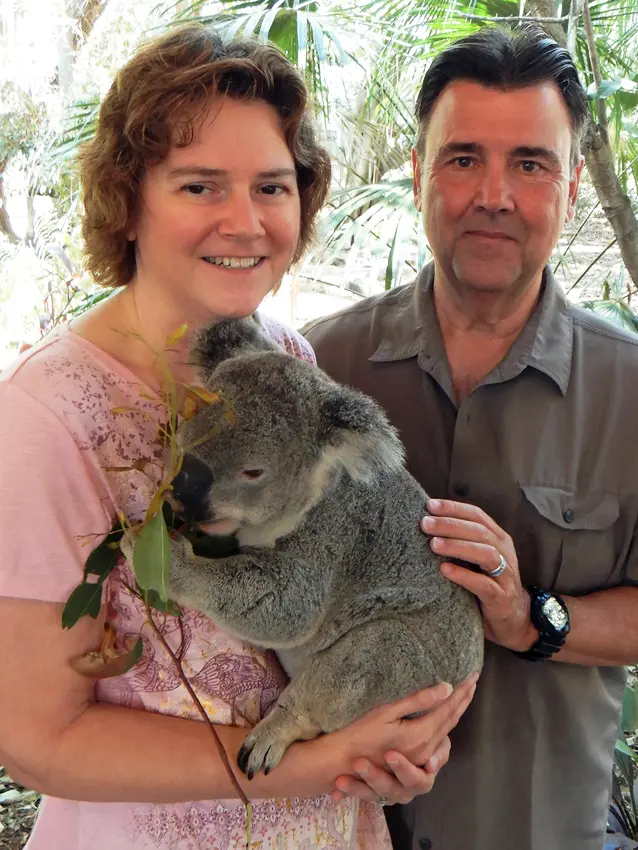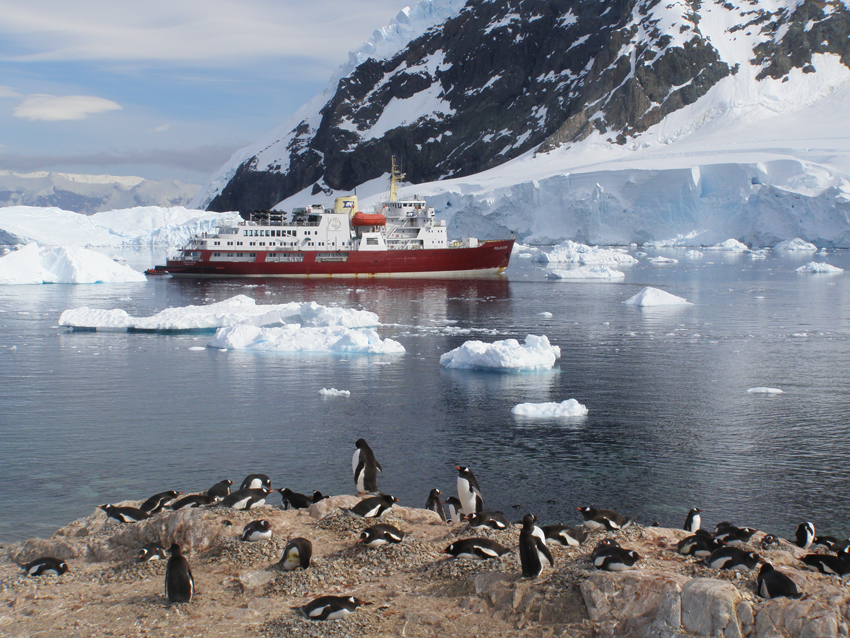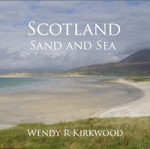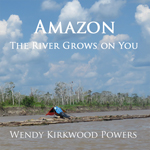Last Updated on May 2, 2023 by PowersToTravel
I’ve visited Norway five times since 2001 – four times with my parents and now with my new husband. You might think I’ve seen it all, and that perhaps it has grown old, as I have! But no! I haven’t grown old, and certainly Norway has not grown old to me.
It was hard to develop the itinerary for this latest trip to Norway. After all, I’ve been to Stavanger, Bergen and the Hardangerfjord, Oslo, Flam and the Sogneford, Stryn, Geiranger, Trondheim, driven north to Bodo, ferried to the Lofoten Islands and the Vesteralen Islands. Besides, I’ve never been to Kirkenes or Tromso. Which of these places should I choose for Greg to see and experience?
How?
The first choice to make is about the logistics – we would drive, or rather, Greg would drive.
Although it is possible to see “Norway in a Nutshell”, via train from Oslo to Bergen, with a spur line down the Flamsbaana, a ferry ride in a fjord, then bus to Bergen, that is just scratching the surface. You haven’t visited Norway if you haven’t driven the “Snow Road” near Aurlandsfjord and stopped to admire the huge ice and snow drifts at the sides of the road, driven the hair-pin turns at Trollstigen at about 10 mph, driven a 12 mile tunnel and felt almost mesmerized by the lights and signs as they flash by, seen an almost 1000 year old stave church and last but not least, driven up and over a breathtakingly impossible bridge linking two small islands.
You also need to experience a ferry ride across a fjord or to an island, the midnight sun, and then if possible, a train ride. You need to experience all that, and spend time out of the car hiking on the mountainsides, breathing in the crisp air, and hopefully feel the sun on your face and not the mist most days!
In summary, the trip depends on Greg driving. While Norway is very mountainous, and some roads can be narrow, they are generally in very good shape. The good news also is that Greg is an excellent driver and enjoys it.
When?
The next choice to make was “when?”
As the title of this post indicates – Svalbard became the crowning jewel to our trip. I investigated and believed that the correct time to visit Svalbard was at the beginning of July. This offset the beginning of the entire trip to mid-June.
Mid-June is a little late in my opinion to begin a trip to Norway. I’ve always been a “shoulder-season” type of person, trying to avoid the crowds. We would start to encounter high-season crowds on our trip.
Our experience taught us that the beginning of July isn’t necessarily the best time to go to Svalbard. We would have been happier visiting earlier. We wouldn’t have missed out on any of our adventures, and we would have seen a lot more snow on the mountains throughout Norway without sacrificing the ability to get around. It can get hot in Norway, we learned. Late May or the beginning of June, when I had always traveled, was the ideal time.
The Itinerary
That aside, here is my most awesome Norway itinerary ever!
- Day 1 – Arrival in Bergen
- Day 2 – Bergen
- Day 3 – Bergen to Flam via Tvindefoss and Naeroyfjord
- Day 4 – Flamsbana to Sognal via Aurland, Borgund Stave Church, Laerdal, Ferry and Kaupanger Stave Church
- Day 5 – Sogndal to Stryn via Urnes Stave Church and Boyabreen
- Day 6 – Stryn to Geiranger via Dalsnibba
- Day 7 – Geiranger to Trollstigen to Trondheim Airport
- Day 8 – Train ride across the Arctic Circle to Bodo
- Day 9 – Bodo to Lofoten Islands via Skutvik Ferry
- Day 10 – Henningsvaer and Trollfjord
- Day 11 – Exploring Lofoten
- Day 12 – North to Tromso
- Day 13 – Morning in Tromso and flight to Svalbard
- Day 14 – Day boat trip to Pyramiden, Svalbard
- Day 15 – Dog Carting with Green Dog and a Polar Bear with Better Moments in Svalbard
- Day 16 – ATV Safari and Better Moments again in Svalbard
- Day 17 – Day boat trip to Nye-Alesund in Svalbard
- Day 18 – Long travel home
Day 1 – Bergen
Bergen is my favorite Norwegian city. It sits on the coast, in a bowl of mountains. Due to the mountains it has a very wet climate, which means that you are more likely to experience gray or rainy skies than blue. I’ve been to Bergen five times, all in June, and have seen and photographed blue skies only once! Perhaps other months are clearer? I just know that I’ve always wanted to visit Norway in early June, before the mobs of tourists descend, when the weather is turning warmer, and the snowy mountain roads are newly open.
Bergen is a favorite cruise ship stop, and on almost every day in the summer there will be thousands of people milling about from the cruise ships. Check out an online cruise ship schedule if this matters to you, and if it is possible to plan your trip late enough to be able to see the cruise ship schedules and how they will impact your trip.
We rented a car at the Bergen Airport, and drove into downtown Bergen, and then parked the car in public parking for the next day, since the car is not needed in Bergen. The airport is an hour outside of the city, and besides, is an hour going the wrong way for our itinerary, so the cost of taking the hour long bus ride into the city upon arrival, then the hour-long bus ride two days later, just to find ourselves an hour out of the way, seemed very counterproductive. My goal is always to reduce driving stress and maximize time spent enjoying ourselves.
We stayed at the Radisson Blu Royal Hotel right on the Bryggen. The public parking garage is right next to the hotel. Remember, all hotels in Norway are a whole lot more expensive than you wish they were! Many years ago I stayed in a pensjonat in Bergen, however they are often high on the hills surrounding the town center, and not adjacent to parking. (If in doubt, use Google Maps, set it for walking distance and then scroll down to see how hilly the walk will be! I didn’t have that opportunity to investigate the impact of hills back in 2001!) For this trip, I ranked convenience over all else.
Bryggen

The Bryggen (wharf) at Bergen is an original series of row house along the wharf which was the commercial center of the Hanseatic traders in the 14th to 16th centuries. The buildings are wood, brilliantly painted in the Norwegian shades of dark red, mustard and white. Some sections contain original wood; some sections have been fully restored. They are filled with cafes, gift shops and museums now. You can walk down the alleys between them to see original parts. On a crisp sunny day it feels to be the epitome of Norway. On a gray day, they are still very photogenic.
Fiske Market
Located right at the closed end of the bay, you’ll see a lot of seafood and fish here! Norwegians love their seafood, and here is a great opportunity to have some fresh fish.

Day 2 – More Bergen
Concerned about how jet-lagged we would be on our first day in Bergen, I also gave us one more day to see the sights. That extra day was a very good idea.
Floibanen
The Floibanen is a funicular which runs up the side of the mountain immediately next to the Bryggen.
It takes you to a park from which you can get the most breathtaking pictures of all of Bergen, given the right weather. In the morning, the sun is in the east and shines directly on the buildings in the foreground, making morning a good picture time. Of course, if the day is gray, it doesn’t make much difference!
In the park you’ll find a large troll. Large trolls are found throughout Norway, especially in the cruise ports of Bergen and Geiranger. It’s the perfect and requisite photo-opportunity to prove you were in Norway.

Lines can be very long to get on the Floibanen due to the cruise ship passengers, but the view is really worth it. We got an early start that morning, hoping to beat the crowds; I can’t say we beat them, but they certainly were a whole lot more numerous waiting to go up, as we left the funicular at the end of our visit. I highly recommend buying tickets ahead of time using their website; note that these are not timed-entry tickets, so you still have to fight the lines.
Torgallmenningen Pedestrian Mall
We strolled up the pedestrian mall Torgallmenningen and checked out its many impressive statues,

and over to the lake, Lille Lungegardsvannet.
We walked back to the Bryggen and out past the Bryggen to the Rosenkrantz Tower and a little further on, King Hakon’s Hall.

If you like photography, Bergen is a feast.
Day 3 – Drive from Bergen to Flam
Ulriken Cable Cars
A fifteen minute drive or taxi ride out of the downtown is the base of Ulriken Mountain and the Uriken Cable Cars. (Search for Ulriken Cable Car Parking on Google Maps.) This trip is entirely weather-dependent. What can be a nice, but gray, experience on the Floibanen, turns into a downright misty or foggy experience on Ulriken Mountain. But I’ve been up there once, on a sunny day, and were the views worth it!

Because the drive to Ulriken is a little out of town, I put the cable car experience on the third day, the driving day, so as to allow us a full day without having to move our car. The view is to the west, so for photography purposes, it is very good in the morning since you won’t be looking into the sun.
The drive to Flam takes 2.5 to 3 hours. Along the drive to Flam, on the E16 major highway, are a number of wonderful stops, which include short walks and food, so it will take you much longer.
Lonavatnet

It is just a stop at the side of the road, but depending on the skies and the weather, a stop at Lonavatnet on the E16 can create your best pictures of the trip. When I traveled with my parents such a stop would eat up an hour or more of the clock, but with Greg? I’d be allowed five minutes to scramble out of the car, run across the highway to the other side, frame the picture, take it, and scramble back.
The key thing is finding a pull-off on Norwegian E-type roads. The roads are fast and have the most awesome views, but are not photographer-friendly. There must be a pull-off along the side of Lonavatnet because on three occasions, 2001, 2006 and 2016 I have taken the “same” picture of the same farm, this one from 2016.
Tvindefoss

Tvindefoss is the first real and wonderful waterfall you will encounter in Norway, and for that reason alone it will be special. It’s only 3 miles up the road from Lonavatnet, so it’s easy to double back to Lonavatnet if you missed the picture of the farm reflecting in the lake.
Tvindefoss has a parking lot, a souvenir shop, and allows you a bit of a walk to stretch your legs.
Stalheim Hotel

Our next stop on the route to Flam is the historic Stalheim Hotel. Situated at the top of the Naeroyfjord mountain glen, it was a favorite of Kaiser Wilhelm II of Germany, who supposedly visited there fifteen times. I can’t say I’ve been there fifteen times, but I have stayed at the hotel, and stopped for a meal many times, just to spend time with the view. No one should drive by without stopping. Noon is the best time because the fjord is narrow and the shadows of mountains can darken the picture as the sun moves behind them. Noon also is a great time for lunch. (It’s about a 2 hour drive from Bergen so plan your departure and amount of time at intermediate stops carefully.)
The hotel is located on a small secondary road, which, if you continue on, snakes down an extremely narrow, windy and steep road called the Stalheimskleiva. It is definitely an experience to have, and you will see some tremendous waterfalls, if the road is open, which it currently is not. The website here describes the road and appears to have its latest status.
So you must continue on the E16 to Gudvangen.
Gudvangen

Gudvangen is the end-point of two of the Sognefjord ferries, and in particular, the end-point of the Norway-in-a-Nutshell Flam to Gudvangen ferry. You’ll find a small town with ferries here, a cafe, some accommodations and a rest-stop, not to mention good photography.
Before you know it, you’ll find yourself in one of Norway’s long road tunnels, the Gudvangtunnelen, at 11.4 km long. You’ll come out of the tunnel for a quick breather, then into the next tunnel of 5 km. Pee before you go!
We came out of the tunnel right above the town of Flam, our destination for the night. Definitely at this point we would not want to back-track for a missed picture in Gudvangen!
Flam
Flam is a busy intermodal town – the Norway in a Nutshell changes from railway to fjord ferry at this point. When the train or ferry arrives the train platform and port swells with people. Once everyone is sorted out, it once again subsides into a quiet little place. It’s not generally an end-of-the-day destination for people, but I have found it to be perfect overnight stop on several occasions.
After a break after the drive, we drive up the Flamsdalen, on a small windy road through small communities, past waterfalls, giving great views of the Flamsbaana train, and the opportunity for short walks in the countryside.
Day 4 – Flamsbana and drive to Sogndal
Flamsbana

If you stay overnight, then you can take the first train of the Flamsbanna up to Myrdal in the morning and be almost the only passengers on the train. The only people on the train will be the ones who stayed in Flam overnight. (Check out the empty train in the picture above!) It makes for a lovely ride up; you don’t know how lovely until you arrive in Myrdal where this spur line joins the major Oslo to Bergen line, and where all the Norway in a Nutshell people are switching to it. Suddenly the train becomes standing-room-only. This mob scene will continue all the way back to Flam, and on both occasions that I have done this, I have been so very, very happy to have experienced that early morning peaceful ride.
I have to assume that because you are reading this post, you know that the Flamsbana is one of the premier experiences in Norway. It is a railway ride through gorgeous scenery with breathtaking engineering that spans 2,833 feet from sea to mountaintop.
** Very Important ** Train tickets from Myrdal to Flam can sell out far in advance. You must search for and buy your tickets early in order to benefit from this early morning quiet train. Where to buy your tickets? At vy.no. They are the official rail network providers. You’ll want to book the first train up, and the next train down. You don’t want to have to hang around Myrdal any longer than necessary – there’s nothing there but a railway station. If you can’t book your trains contiguously, then select a later train in the day, and spend the morning driving up the Flamsdalen and taking pictures of the trains!
Aurland

It is just a ten-to-fifteen minute drive along the fjord to the next town of Aurland. Every town seems quaint and worth staying in and exploring, but my itinerary for Greg requires us to move on, and UP!
** Important note ** There are two options for travelling between Gudvangen and Laerdal / Fodnes – 1) up and over the Aurlandsfjellet, described below and my preferred option and available only during the summer – and 2) the Laerdal tunnel, the longest tunnel in Norway. It is 24.5 km long and provides ferry-free travel between Oslo and Bergen. For that reason it is a key part of the Norwegian infrastructure. In investigating this article for the Mannheller-Fodnes Ferry schedule I bumped into an “Emergency Ferry schedule” which I of course had to check out. Turns out that Norway has announced, in April 2023, major reconstruction work on the Laerdal tunnel which will begin in 2025. This work will involve night-time closures of the Laerdal tunnel to perform vital maintenance. The closures are expected to last several years. They also anticipate changing and increasing ferry schedule frequency to help out.
Above Aurland and at the end of some very windy switchbacks is one of the most iconic views in Norway. They’ve built an extensive wooden viewing platform at the Stegastein Viewpoint, with a glass wall at the end for you to really see the fjord.

Aurland Snow Road
As you continue on, the road straightens and enters a high plateau. We have now entered a “Snow Road” across the Aurlandsfjellet, which is typically closed until sometime in May. Since our trip takes place in mid-June, we see the snow, but it’s not high.

The road continues down to sea-level where one can take a right to Borgund or a left to Laerdal. Which way should we go? We’ll go both ways, well, not at once! We will head to Borgund, as it is home to the largest Stave Church in Norway.
Borgund Stave Church

I find it fascinating that wooden structures can survive so very long. In looking to confirm just now that tar is a key ingredient in their preservation, I bumped into this very informative article, Why Norway’s Spectacular Stave Churches are at Risk.
Laerdal

Turning back from Borgund, we traveled quickly to Laerdal. Laerdal has a modern town center, but also an historic center dating back to the 1700 and 1800s as well, called Gamle Laerdalsoyri. The historic center makes a great walk past traditional Norwegian architecture. To our surprise, the town was in the midst of a summer fair. It was the 3rd Sunday in June.
Fodnes to Mannheller Ferry

A short drive up the road from Laerdal is the Fodnes ferry, which crosses the mouth of the Lustrafjord as it joins the Sognefjord. Information on all the Sogne og fjordane ferries is found at Norled.no. When you read the schedules, fra means from and til means to. It’s a fifteen minute crossing – no reservations needed.
Kaupanger Stave Church

This day just goes on and on! There seems to be no end of interesting things to see in Norway. The Kaupanger Stave Church is located just a short drive from the ferry port. It is not a matter of “seen-one, seen-them-all” with stave churches. It quickly becomes a collection: “So, I’ve got Borgund; which is the next to collect/see?”, especially when the sun is shining. When the sun is not shining, the pictures become very dark and dull, but when the sun shines?
I’ve always loved the Norwegian Stave Churches, partly because of their placement in gorgeous scenery and partly because they awe me with their age and continued survival as wooden structures. It wasn’t until we visited Maramures, Romania that I learned that the Norwegian stave churches were part of a medieval culture of wooden churches in Northern and Eastern Europe. I wonder where else I will see them as I continue my treks around Europe?
Hofslund Fjord Hotel

Our final stop for the day is our hotel – the Hofslund Fjord Hotel in Sogndal. It is a 3-star hotel set on the banks of the fjord with beautiful views and balconies. I highly recommend it. What a treat!
Next “Two Weeks in Norway – The Heart of the Glaciers and Fjords – Days 5 to 7”






